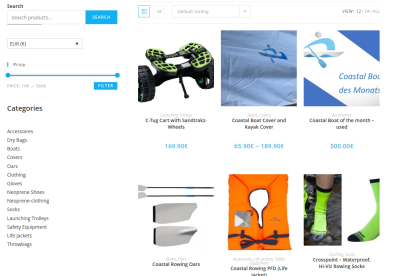Following up on our post about rowing seat pad stops hamstring pain, we had expert comments from Rowing Expert 

I’m a US-based physiotherapist in San Diego, California (RowPhysio.com), and I’ve had this very discussion many times with my client pool of rowing athletes who come to me from all over the USA with hamstring pain at or near the sit bones.
There are many treatment approaches to solving this problem, and it’s critical to take a multi-pronged approach.
The seat pad will certainly help but won’t solve the underlying problem or movement dysfunction which ultimately led the hamstrings to hurt. From an equipment perspective, Carl Douglas certainly is the most customized yet costly version, while for the majority of rowers, a seat pad like the one you offer will work just fine.
From there, 2 key actions will not only reduce your chances from flare-ups but will likely solve the problem once and for all:
- physio by a well-trained physio;
- physio by a physio who knows rowing.
By the sound of it, Rebecca, your last physio visit may have been of the cookie cutter variety, based solely on stretching and exercise following a poorly derived/researched treatment protocol, and clearly missing the critical component of bodywork in the form of hands-on soft tissue mobilization, muscle/fascia active release type techniques, joint mobilization, spinal manipulation for the right people, and guided specific exercises to retrain the hamstrings and nearby muscles how to succeed despite rowing’s repetitive strain.
Unfortunately you missed a great opportunity to connect with a physiotherapist who understands the needs of a sports athlete and rowing itself. I know you’re not alone, too, and I’d love to hear more about your experiences so we can improve your access to quality physiotherapy by the best practitioners.
Looking forward to more discussion and collaboration
3 suggestions to make rowing seats comfortable
Another reader, Graham replied
- Buy a sheet of 6mm stiff foam from a ‘Rubber’ shop, then make your own seat pads. Different shapes, thickness etc.
- I’m not sure that holes for the sit bones are a good idea. They presumably transfer pressure from the bones to the muscles
and tendons nearby. - Layback at the catch by rotating near the hips as you catch. This should reduce the muscle load at the sit bones, and the
Why do rowing seats have holes?
Which provoked this response from Greg.


Graham – great ideas, especially when you’re in the early phases of finding the best rowing seat pad for your own needs.
Regarding your #2 recommendation, the holes in rowing seats are actually designed for the very purpose of distributing the load amongst the muscles and soft tissue around the sit bones and relying on our built-in padding around our bums.
Bone and its outer layers especially are jam packed with more sensory nerves than anything else in the body… working kind of like a fracture detection system before the days of x-ray machines in every doctor’s office. When sitting in most seats or old dories/rowboats [Ed: with flat plank seats], you have the luxury of shifting weight to disperse the load. Sit long enough and it starts to burn down there, right?
For rowing and sculling, you’re not only sitting for an extended time but also pivoting fore and aft while creating significant strain on the attachment points of your hamstrings (the sit bones!). For some, you could get away without those holes, but for rowers, I’d bet my money on keeping them there.
Thanks very much to Greg and Graham for contributing and sharing their expertise.
Any other observations to contribute to the discussion?







